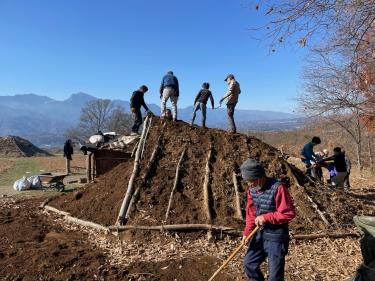
CAS Luncheon Series
Thursday, November 2 at 12:30pm
CASE Building room W311
This talk looks at the history and politics behind the reconstruction of prehistoric architecture in Japan. It will cover the reasons these buildings have been made, the problems of authenticity that surround them, and the tension between the science and subjectivities that go into their production. As background, the talk will introduce the work and critiques of several architectural historians who in 1951 designed ancient homes. The body will go into the presenter’s current research doing archaeological excavation and reconstruction of a Middle Jomon period pit house.
Throughout Japan, many types of prehistoric homes and buildings have been reconstructed at some 350 locations. By far, the most fetishized of these is the Jomon period pit house (14,000 to 300 BC), which today dons the first pages of most architectural history texts. Before 1949, however, the Jomon pit house did not exist, as the origins of Japanese architecture were attributed to shrines, temples, and ancient palaces. The “discovery” of the Jomon pit house was enabled by the ideological and political changes following the end of the war. It was also due to the growth of interest in archaeology, which allowed people to uncover their pasts and rebuild them with their own hands.
John Ertl is an associate professor at Keio University in the faculty of economics where he teaches classes on Japanese studies, anthropology, cultural resource studies, and English language. His research is broadly based in science and technology studies and design anthropology.
